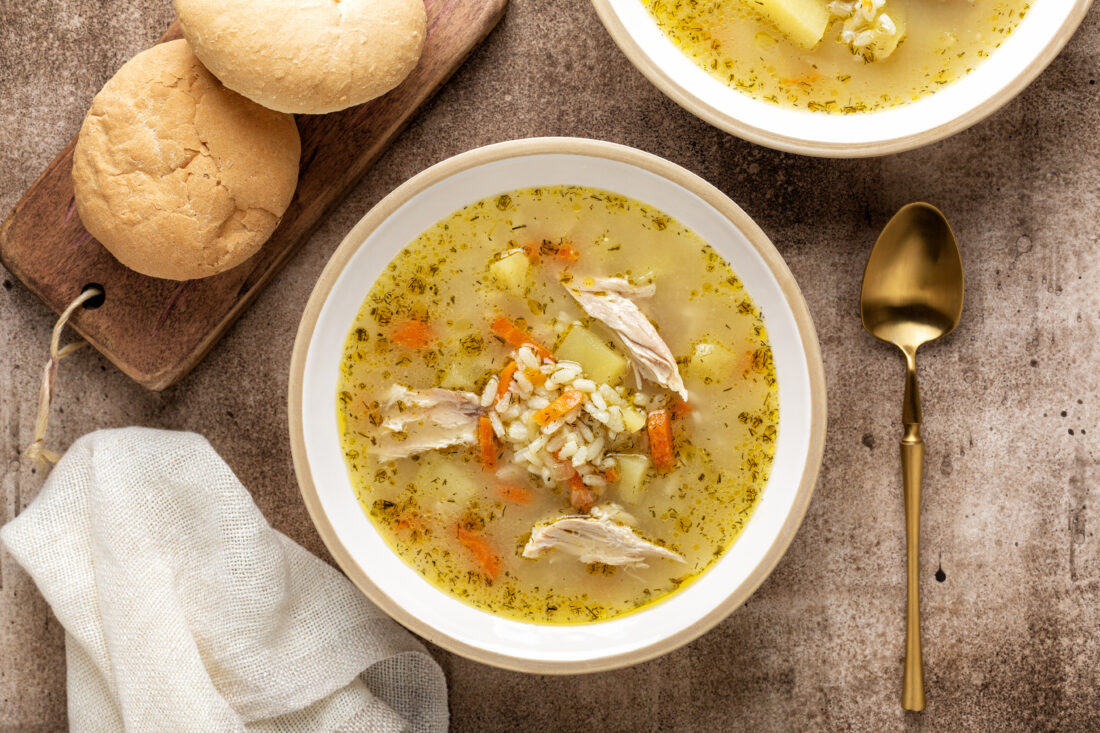Sick day stories: the role of comfort food in recovery and relief

The average American feels better less than 30 minutes after indulging in their favorite sick-day comfort food. According to a poll by Delsym, the familiar meals play a big part in feelings of recovery and relief in both parents and children.
But not all comfort food is made the same. While children prefer mac and cheese, tater tots and other treats, parents might prefer the nostalgia found in bowls of soul and popsicles. What is it about bowls full of familiar delicacies that helps people feel better?
How Comfort Food Helps
Comfort foods are varied. They change across cultures and age groups. A bowl of khichdi (mixed rice and lentils boiled with a few spices) may cheer up people from some communities in India. Others crave warm soup or spicy instant noodles, especially when they’ve caught a cold.
Despite their differences, these foods bring people joy when they are down and ill. Of course, taste and the nutritional content of the food play a big part in how what we eat makes us feel. But the science behind comfort food goes deeper, with a lot of it having to do with nostalgia rather than nutrition.
Food, its taste and scent, tend to remind us of places and people from our past. They bring to mind moments of joy and, yes, comfort. Thus, the food in question becomes a source of happiness, which keeps people coming back for more.
The scent of food often reminds us of powerful memories. Medical studies find our memory for scents is precise and long-lasting, especially when it comes to smells one came across as a child. The area of the brain that processes smells is directly connected to the amygdala and hippocampus in the brain. These regions process feelings, emotions and memories.
Aside from nostalgia, the context in which we eat foods also determines how much we enjoy them. When you enjoys your food, surrounded by feelings of community and warmth, it becomes tied to those emotions. These contexts may determine what becomes our comfort food in the long run. It is perhaps unsurprising that individuals tend to seek out more comfort food when they are feeling isolated and alone, desiring to evoke those past occurrences.
However, memories are not the only reason people seek out these foods. Food is essential for our survival, so our brain has a reward system for when we eat anything. It releases opioid-based chemicals every time we consume something, and these chemicals make us feel good.
A medical study conducted at MIT found carbohydrates, often a key ingredient found in comfort meals, increase the release of the hormone serotonin. Protein-poor, carbohydrate-rich snacks or meals cause our brains to produce serotonin, a mood lightening brain chemical.
Comfort food also increases the release of dopamine — the happy hormone. According to a University of Michigan study in 2020, certain meals, in particular, help reward people’s brains. The study found evidence of “hedonic hotspots.” These subregions heighten the pleasurable effects of eating tasty food like carbs, fats, and salts. This, in turn, causes a spike in dopamine levels, leading people to repeatedly seek out and repeat the experience.
The effects of this system are different for different people. A neurological study at international universities in 2020 discovered people who have a sweet tooth and naturally more sensitive to sweetness have stronger brain-reward responses compared to less sweet-sensitive people. So, it makes sense that sugary goodies rank high when it comes to comfort food.
What’s America’s Favorite Comfort Food?
The survey conducted by OnePoll of 2,000 millennial-age parents of school-going children found a variety in preferences, based on age and background.
For the parents, soup (65%), broth (42%), crackers (35%), and popsicles (35%) reigned supreme. Some even prefer stew (21%) and pasta (14%).
A few parents, 12%, said mac and cheese ranked high among their comfort foods. Their children were much more amenable to the high starch food — 23%. They also like pudding (20%) and oatmeal (14%) more than their parents.
Toast was a favored flavor for 21% of both groups, although parents tended to prefer it with honey. Or just raw honey.
The least favorite sick foods include spicy foods (37%), chili (21%) and ginger (16%).
62% of those polled say they prefer food that offers relief from symptoms. 44% value the ingredients, and 41% give importance to the temperature of the meal. From a psychological perspective, the person who made the meal and whether can easily be reheated was important to 22% of the respondents.
— — —
This article was produced by Media Decision and syndicated by Wealth of Geeks.




